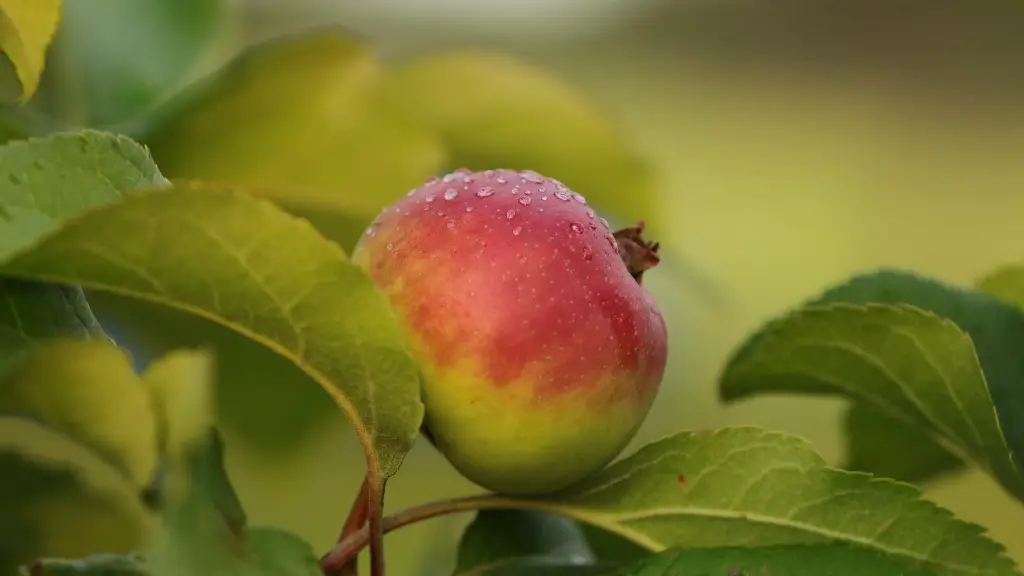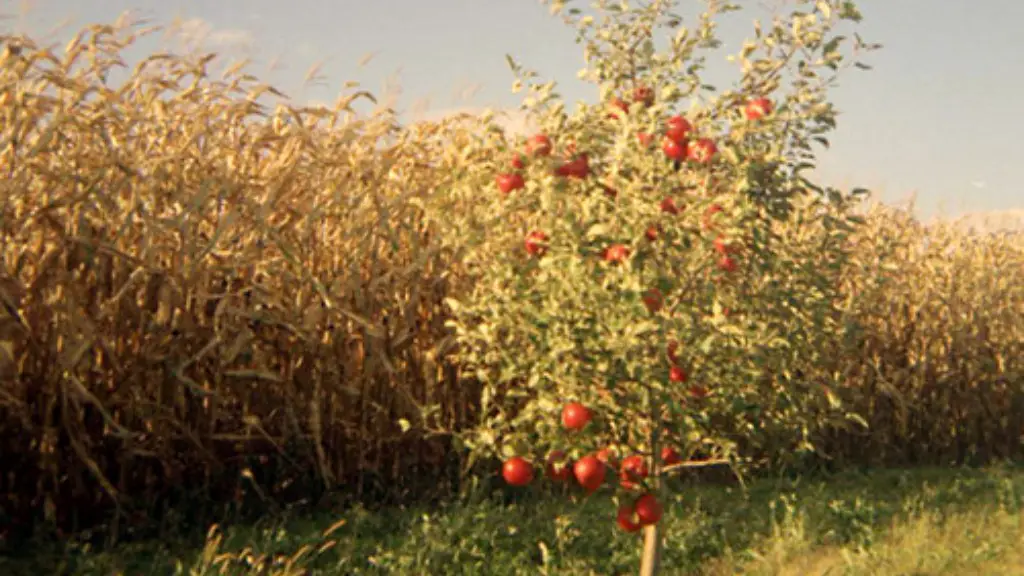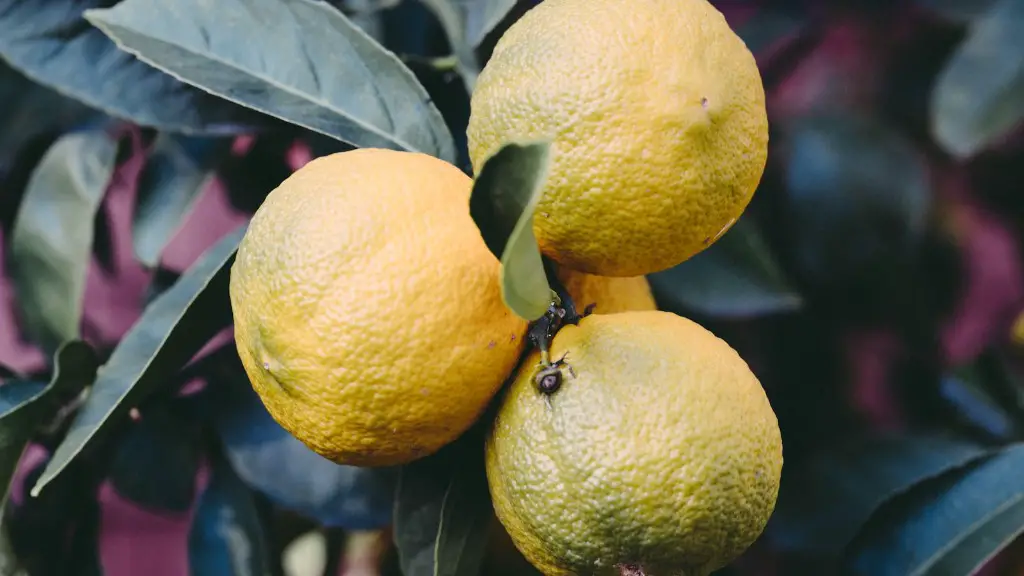Tips For Planting An Avocado Tree
Growing an avocado tree from the pit is an easy way to bring the flavor of the tropics to your home or patio. While it may take years for an avocado tree planted from seed to bear fruit, the process of growing it is quite simple, as long as you follow a few key tips.
The first step is to properly prepare the pit. For starters, it needs to be washed off and dried. Then it needs to be pierced in multiple places to allow water to penetrate into the seed and facilitate successful germination. Once the pit is prepared, the next step is to germinate it. This can be done either in water or in the soil, depending on personal preference.
Germinating in water can be done by submerging two-thirds of the pit in a cup of warm water, and then setting the cup in a spot with plenty of indirect sunlight. Within about a week, a sprout should emerge, at which point you can plant it in the soil. Alternatively, you can plant the pit directly in the soil. This is done by setting the pit in a spot that gets plenty of sunlight and burying it about two inches beneath the surface. Then you should water it about once a day.
It usually takes the seed about four to eight weeks to germinate, at which point you can begin potting the seedling, using general potting soil and a 12-inch pot. Be sure to always use soil with good drainage, and water the seedling once a week. It’s important to note that the seedling needs at least 14 hours of sunlight a day in order to establish its root system and thriving as an adult tree.
Once the seedling has grown to an upright position, it’s important to begin preparing the tree for transfer to its permanent spot in the ground. To do this, gradually increase the size of the container until the tree is ready to transfer. The tree should be watered occasionally during the transfer preparation process, usually about every other day. Once the tree is ready to transfer, you can then move it outdoors to its permanent spot in the ground.
When transferring the tree to the ground, it’s important to choose the right spot. The spot should have partial shade, and a nutrient-rich soil. Once the tree is in the ground, you can begin watering it two to four times a week. It should also be fertilized twice a year, in the spring and fall.
As long as you follow these tips, your avocado tree should thrive and produce fruit in no time. With patience and careful cultivation, you’ll soon be enjoying fresh avocados from your own tree!
Tips for Pruning an Avocado Tree
Pruning is a key component in growing a healthy and productive avocado tree. Regularly pruning your tree will help maintain its shape and size, as well as make sure that it is able to produce the most fruit. Pruning also helps keep air and sunlight flowing to the center of the tree, which is essential for fruit production.
Before you begin pruning, it’s important to make sure you have the right tools. This includes a pair of sharp pruning shears, a hand saw, and gloves. It’s also important to make sure you are pruning your tree at the right time of the season, which is usually in late winter, while the tree is still dormant.
When pruning your tree, start by removing any dead branches or twigs. Then, begin thinning the branches to let in more light and air circulation. Be sure to prune any branches that rub against one another, as this can limit the growth of fruit. When pruning larger branches, it’s important to make sure you make the cuts further back than where the branch forks, as this will encourage new growth.
Once the tree is pruned and the dead branches removed, you can begin fertilizing and watering it. Regular feeding and watering of your avocado tree is essential for it to thrive. Fertilizing should be done every four to six months, and it’s important to use a fertilizer specially designed for an avocado tree. Watering should be done every three to four weeks, depending on the season, and it’s important to keep the soil moist but not waterlogged.
By following these tips, you can keep your avocado tree healthy and productive. Pruning your avocado tree is essential if you want to maximize fruit production, and it’s important to make sure you prune it correctly. With regular care and maintenance, your avocado tree should yield plenty of delicious fruit for years to come.
Caring for Fruit on Avocado Trees
Once your avocado tree starts producing ripe fruit, it’s important to make sure you’re taking care of it properly. If you neglect your fruit, or mishandle it, the quality and quantity of your harvest can suffer. To ensure your harvest is optimal, it helps to know a few of the basics of caring for the fruit your tree produces.
The first and most important step is to make sure you are harvesting your avocados at the right time. Avocados not ready to be picked will yield a harsh, unpleasant flavor, so it’s important to pick them when they are just ripe. To tell if a fruit is ready to be picked, gently squeeze it. If it yields to pressure, it is ready to be picked.
Once the fruits are picked, it’s important to keep them away from the cold. Low temperatures can cause avocados to freeze, resulting in discolored and bitter-flavored fruits. To avoid this, be sure to store the fruits away from cold temperatures, and keep them out of direct sunlight.
Finally, be sure to check your fruit regularly. Avocados ripe on the tree tend to soften and spoil quickly once they are picked, so it is important to use up your harvest quickly. Checking your fruit regularly will ensure that any ripe avocados are eaten before they spoil.
Caring for the fruit on your avocado tree requires diligence and regular maintenance. If done correctly, however, your harvest will be abundant and of highest quality. Following these tips will ensure that you get the most out of your tree for years to come.
Properly Staking an Avocado Tree
When an avocado tree is young, it needs support from a stake to help stand upright securely in the ground. Staking an avocado tree helps it to grow straight and strong, which is essential for growing a healthy and productive tree.
Before staking your tree, it’s important to pick the right stake. Wooden or metal stakes of 4-6 feet long should work well for an avocado tree. Once you have the stake, you can begin installing it. This involves setting the stake about a foot away from the trunk, and driving it into the ground until it is secure.
Once the stake is in the ground, you can begin tying the tree to the stake. This is done with a soft material such as twine. Begin by looping the twine around the stake and trunk, and then gently pulling the twine to secure the tree in place. It’s important to make sure the twine loop is loose and not too tight, as this can damage the bark of the tree.
It’s important to remember to adjust the stake over time as the tree grows, as the stakes may need to be moved further away from the trunk as the tree gets larger. This will help ensure the tree remains properly supported. It’s also important to check the twine regularly, making sure it is not too tight and that the tree is still securely in place.
Staking an apple tree is an important part of the care process. It is essential for helping the tree stand upright and grow strong, so it is important to make sure it is done correctly. With regular adjustments and proper staking, your avocado tree should thrive and bear plenty of delicious fruit for years to come!
Preventing Pests and Disease on Avocado Trees
Avocados are susceptible to certain pests and diseases that can reduce their yield, so it is important to make sure your tree is properly maintained to prevent them. The best way to prevent pests and disease on an avocado tree is to make sure it is properly watered and fertilized, and has adequate air circulation.
When watering an avocado tree, it is important to make sure the soil is kept moist but not overwhelming wet. Additionally, it’s important to fertilize the tree in the spring and fall with a fertilizer specifically designed for an avocado tree. This will help keep the tree healthy and prevent it from becoming susceptible to pests and diseases.
It is also important to make sure your tree has good air circulation. This can be done by pruning the lower branches of the tree to allow air and light to enter. Pruning can also help get rid of dead or diseased branches, which can be a source of pests or disease. Finally, it’s important to make sure your tree is not overcrowded. Planting other trees or vegetation too close to the avocado can impede air circulation, leading to poor fruit production.
By following these tips, you can prevent pests and diseases from attacking your avocado tree. With proper care and maintenance, your tree should be able to thrive and produce plenty of healthy and delicious avocados!



